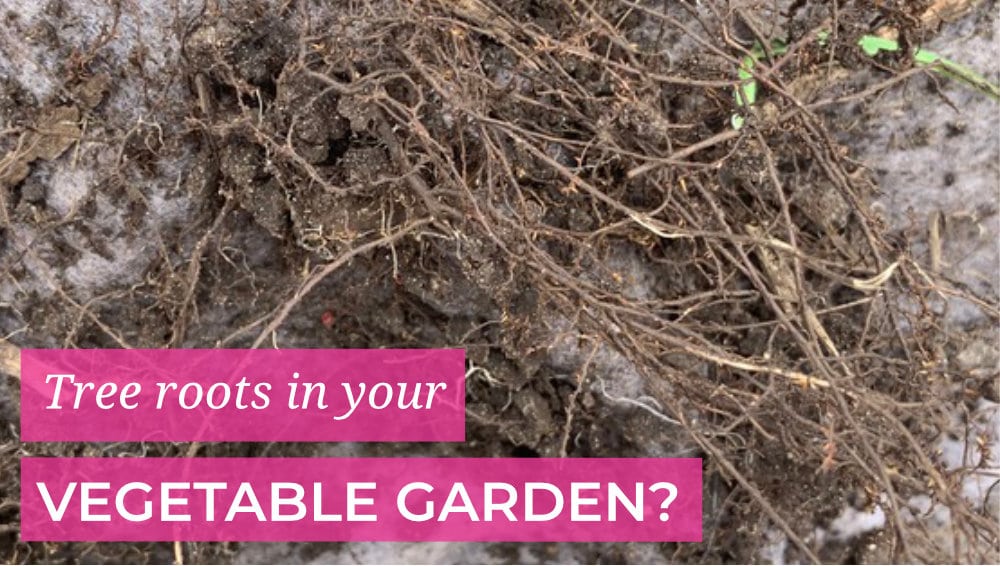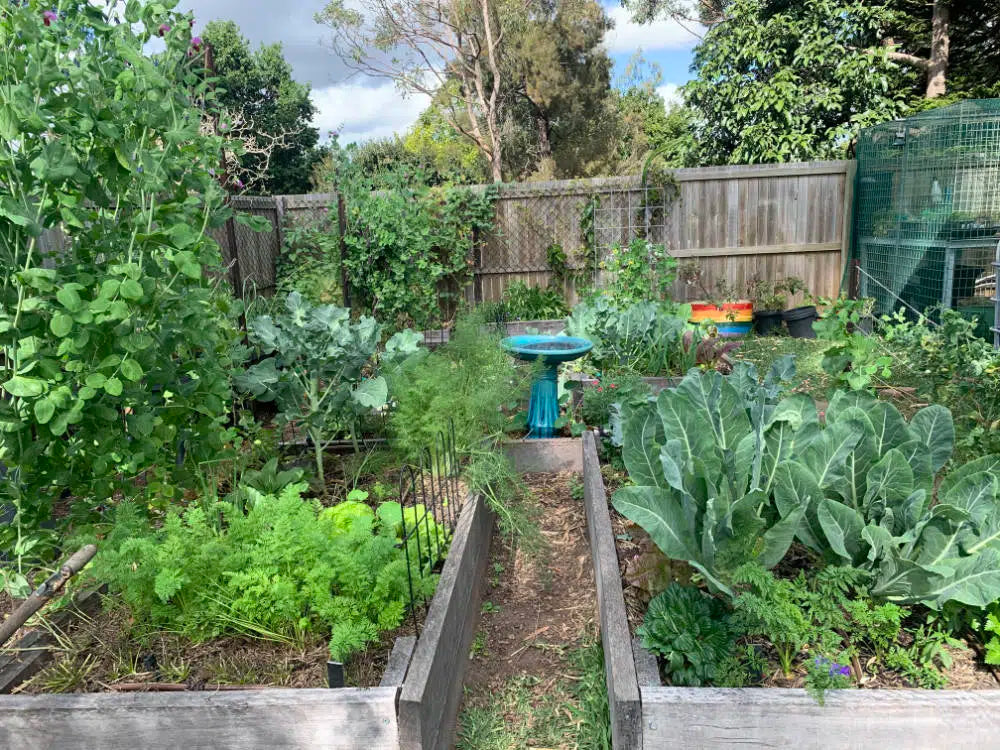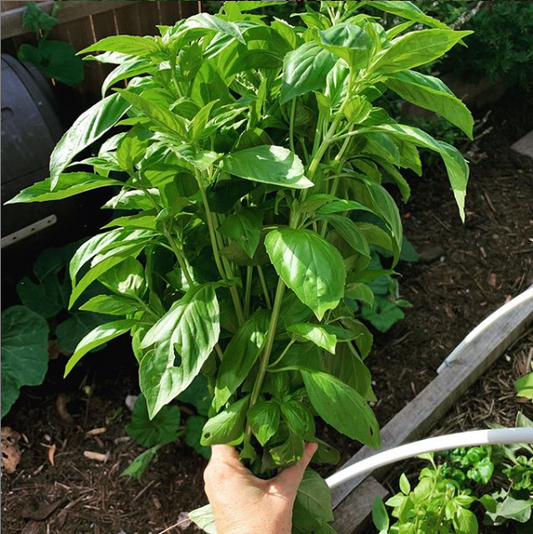When we first moved to our block here, I thought long and hard about the positioning of our garden. I was considering sunlight in the varying seasons, wind protection as we live on a hill and it can be quite damaging to the garden at times and overall position for convenience, as in, easy kitchen access.I was looking at design and layout for the small space we had. But the one thing I completely overlooked was the resource hungry neighbouring trees.
I think it took only one season for me to realise that my garden beds weren’t performing as well as they normally would. At the time I figured it was just me not getting my compost right. It wasn’t until I made a straw bale garden and it was the end of its life span, I started to pull it apart that I noticed it was full of tree roots.
I am not exactly sure what the tree is called, I believe it’s from the mulberry family. All I really know is that it has these fine feeder roots that stretch 5 metres beyond it’s canopy and it completely sucks moisture and nutrients from the soil. As it’s a deciduous tree, it's particularly bad during the warmer months. It’s not our tree, we can’t do anything about it, in fact I do love the birds, shade and protection from the wind it brings, so we had to work around the tree. Afterall it was here first.
What we tried
Geo fabric. I believe I got the idea from an episode of gardening australia where Millie put down a barrier to slow the tree roots from of a gum tree getting into her verge garden. So I pulled all the soil out of my garden beds and lined them with geofabric. It was a big back breaking job.
It wasn’t until I had to relocate a garden bed - we upgraded from small 1x1 to 2x1 beds, that I saw the tree roots had just grown right through the geo fabric. So it was then we realised that geo fabric wasn’t an option for this particular tree.
Solutions for invasive tree roots
I guess the best solution is to rethink your positioning. Can you move your garden beds to a better position away from the offending tree? If not it’s time to get creative.
In our situation, as we had already invested in the infrastructure we didn’t really want to move the garden beds. Plus they were in the best position sun wise. We’ve opted to converting these garden beds to wicking beds which will have the added bonus of being more hands off and water saving. I have loads of resources about wicking beds which you can find here and if you’re a Dirt Lover I have video tutorials on how we set ours up.
Here's a video moving one of our IBC beds here.
What about garden beds that aren’t raised?
Again in our situation we did try geo fabric with soil on top for a herb garden direct on the ground in the danger zone, but it proved to be not a good option. Instead we have just opted for plants in this area that can handle less water and nutrients and moved the other plants to a more favourable location. It comes to a point where you really just have to think creatively about what you have rather than working against it.
I’d love to know how have you handled invasive tree roots in your garden, leave a comment below.








1 comment
Thanks for this very informative article. I have exactly the same problem with my raised garden bed. I have put in a thick woven Weedmat (GrowRite HD 100gsm) I was recommended at the shop. They talked me out of Geo fabric.
After a few months however, the roots were back.
I did write to Millie/Gardening Australia; I was wondering if her attempt with Geo fabric was successful. Unfortunately, never heard from them.
Now, I really don’t know what to do next. We are just renting and I don’t want to invest too much to fix the problem.
Happy New Year
Cheers Verena